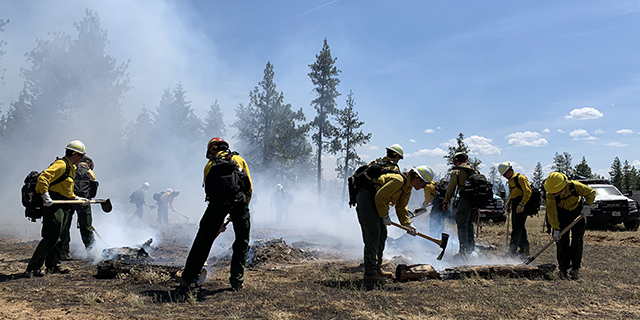Answer man: Wolf populations were low in late 1800s in Northeast Oregon
Published 11:00 am Wednesday, January 31, 2024

- Mason
It appears that wolves were relatively rare in Union and Wallowa counties more than a century ago.
Bounty payment records are an indication of this in Union County. Bounty records for 1899 to 1902 reveal that no bounties for wolves were paid during this period of time. Bounty records from 1903 to 1908 are not available, but those for 1909 to 1921 reveal that during this 12-year span just two bounties were paid, one for a wolf killed on Feb. 1, 1913, and one for a wolf killed on April 18, 1921. Funding for the bounties were provided by the state, according to Oregon Wild’s website, oregonwild.org.
The number of bounty payments in Union County for other animals during this period was much greater. For example, at least 1,000 coyotes were killed for bounties in Union County from 1899 through 1902. Bounties for at least 3,000 coyotes were paid between 1909 and 1921.
Wolves are believed to have become extinct in Northeast Oregon soon after 1921. The extinction date is not known, but the late Oregon Department of Fish and Wildlife Biologist Bill Brown said that when he came to Northeast Oregon in the late 1940s no wolves were here. Brown, who died in 2011, told The Observer several times there was no evidence or other indications that Union County ever had high wolf populations.
It appears wolves were never abundant during Wallowa County’s early settlement period, which ran from the 1870s through 1890, according to the 2018 book “Memoirs of a Backcountry Bio” by Vic Coggins, a retired ODFW biologist in Enterprise. Coggins has done extensive research of historical accounts of wildlife in Wallowa County, examining journals of trappers and missionaries, old newspapers and reports on archaeological excavations.
“While there are numerous references to grizzly bears, black bears, cougars and small predators, no mention of wolves is made during this time of settlement,” wrote Coggins, who worked with the ODFW for more than 40 years.
Coggins also noted there are only two geographic names in Wallowa County making reference to wolves — Lobo Creek, a tributary to the Minam River, and Wolf Creek, a tributary to Three-Buck Creek. Lobo Creek, of course, is a timber wolf reference, but Coggins said Wolf Creek may be named after a local family.
Coggins also wrote there is evidence of significant wolf activity in what is now Wallowa County before settlement there started in the 1870s. He said entries in a journal by an early settler in the late 1830s makes several references to wolves. There are a number of accounts by the settler of wolves attacking his livestock, including his sheep. On another occasion, the settler said a colt of his died after being bitten by a wolf.
Coggins later found a note dated Oct. 2, 1839, asking someone for enough strychnine “to kill 1,000 wolves.” Strychnine is a poison that has been used for hundreds of years to kill predators. Coggins said the possible use of poisons like strychnine could have been a factor in keeping Wallowa County’s wolf population down.
Another reason may have been salmon poisoning. Coggins said wolf populations in Wallowa County may have been kept down because its packs ate salmon infected by a parasite that can kill wolves when consumed.
Coggins noted that the 1944 book “The Wolves of North America,” by Stanley P. Young and Edward A. Goldman, states many pioneers believed salmon poisoning kept wolf populations down.
Coggins agrees that poisoning could have had a big impact.
“This appears to be a logical explanation for the lack of wolves in Wallowa County” in the late 1800s, Coggins wrote.
Wolves in Northeast Oregon today are at much less risk of salmon poisoning because the once massive runs of the fish in streams, including the Grande Ronde and Wallowa rivers, are now greatly diminished.
Wallowa County, according to the ODFW’s latest wolf census data released in April 2023, has about 37 wolves and Union County has about 30. Wolves began arriving back in Oregon in 1999 after becoming extinct in the state around 1950. They started appearing in Oregon again after releases of the predator were made in the Yellowstone National Park area and Central Idaho in 1995 and 1996.





